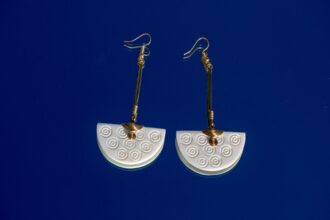The term “conflict gold” refers to gold that is mined in war-torn regions and sold to finance armed conflict, human rights abuses, and other forms of violence. The origins of this troubling phenomenon can be traced back to the late 20th century, particularly in Africa, where civil wars and political instability created a fertile ground for the exploitation of natural resources. Countries such as the Democratic Republic of the Congo (DRC) and Sierra Leone became notorious for their involvement in the illicit trade of gold, which was often used to fund rebel groups and militias.
The allure of gold, with its high value and demand in global markets, made it an attractive resource for warring factions seeking financial support for their activities. As conflicts escalated, the mining of gold became increasingly intertwined with violence and human rights violations. Armed groups seized control of gold-rich territories, often displacing local communities and forcing individuals into labor under brutal conditions.
The lack of regulation and oversight in these regions allowed for rampant exploitation, as the international community largely turned a blind eye to the atrocities occurring in the name of profit. This dark history laid the groundwork for a complex web of relationships between conflict, resource extraction, and global markets that continues to this day.
Key Takeaways
- Conflict gold fuels armed conflicts and funds violent groups, exacerbating global instability.
- Mining conflict gold causes severe human rights abuses and environmental degradation.
- International regulations and corporate responsibility are crucial in reducing conflict gold trade.
- Consumer awareness and ethical purchasing can help diminish demand for conflict gold.
- Ongoing challenges require coordinated global efforts to ensure sustainable and conflict-free gold sourcing.
The Impact of Conflict Gold on Global War
The impact of conflict gold on global warfare is profound and multifaceted. The revenue generated from the sale of conflict gold has been instrumental in prolonging conflicts, enabling armed groups to sustain their operations and purchase weapons.
In regions where conflict gold is prevalent, the cycle of violence becomes self-perpetuating, as communities are caught in a vicious cycle of poverty and instability. Moreover, the global demand for gold has created a complex supply chain that often obscures the origins of the metal. Consumers and corporations may unwittingly contribute to the perpetuation of conflict by purchasing gold without awareness of its provenance.
This disconnect between consumer behavior and the realities on the ground highlights the urgent need for greater transparency in the gold supply chain. As long as conflict gold remains a lucrative commodity, it will continue to play a significant role in global warfare, undermining peace efforts and perpetuating suffering.
The Role of Armed Groups in the Conflict Gold Trade

Armed groups play a central role in the conflict gold trade, often acting as both miners and distributors of this valuable resource. In many cases, these groups exert control over mining operations through violence and intimidation, forcing local populations to work under dire conditions. The profits generated from these operations are then funneled into financing their military activities, creating a direct link between resource extraction and armed conflict.
This dynamic not only sustains the groups involved but also destabilizes entire regions, as rival factions vie for control over lucrative mining territories. The involvement of armed groups in the conflict gold trade also complicates efforts to achieve peace and stability. Negotiations aimed at resolving conflicts are often undermined by the financial interests of these groups, who may be unwilling to relinquish their control over profitable resources.
Additionally, the presence of armed groups can deter legitimate investment in mining operations, further entrenching poverty and instability in affected areas. As long as these groups continue to profit from conflict gold, achieving lasting peace will remain an elusive goal.
The Human Cost of Conflict Gold
| Metric | Value | Description |
|---|---|---|
| Estimated Annual Revenue from Conflict Gold | 300 million | Approximate yearly income generated by armed groups through gold mining |
| Number of Child Miners | 40,000+ | Children involved in hazardous gold mining activities in conflict zones |
| Reported Human Rights Violations | Thousands | Incidents including forced labor, violence, and exploitation linked to conflict gold |
| Countries Most Affected | Democratic Republic of Congo, Central African Republic, Sudan | Primary regions where conflict gold mining fuels violence and instability |
| Percentage of Global Gold Supply | 5-10% | Estimated share of gold produced in conflict-affected areas |
| Number of Armed Groups Funded | 10+ | Armed factions financially supported through conflict gold trade |
The human cost of conflict gold is staggering, with countless individuals suffering as a result of its extraction and trade. In regions where armed groups dominate the mining landscape, local populations often face violence, exploitation, and displacement. Miners are frequently subjected to hazardous working conditions, with little regard for their safety or well-being.
Reports of forced labor, child labor, and human trafficking are alarmingly common in conflict-affected areas, highlighting the severe human rights abuses that accompany the pursuit of gold. Beyond the immediate dangers posed by armed groups and exploitative labor practices, the broader societal impacts are equally devastating. Communities torn apart by violence struggle to rebuild in the aftermath of conflict, with limited access to education, healthcare, and economic opportunities.
The psychological toll on individuals who have experienced violence or displacement can be profound, leading to long-term trauma that affects future generations. The human cost of conflict gold extends far beyond the mines themselves, permeating every aspect of life in affected regions.
The Environmental Impact of Conflict Gold Mining
The environmental impact of conflict gold mining is another critical aspect that cannot be overlooked. The extraction process often involves destructive practices that lead to significant ecological degradation. Deforestation is rampant as forests are cleared to make way for mining operations, disrupting local ecosystems and threatening biodiversity.
Additionally, the use of toxic chemicals such as mercury in gold processing poses serious risks to both human health and the environment. Contaminated water sources can lead to widespread health issues for communities reliant on these resources. Furthermore, the environmental consequences of conflict gold mining can exacerbate existing tensions within communities.
As natural resources become depleted or contaminated, competition for clean water and arable land intensifies, leading to further conflict. The degradation of the environment not only undermines livelihoods but also contributes to a cycle of poverty that can perpetuate violence. Addressing the environmental impact of conflict gold mining is essential for promoting sustainable development and fostering peace in affected regions.
The Efforts to Combat Conflict Gold

In response to the growing awareness of the issues surrounding conflict gold, various efforts have been initiated to combat its trade and mitigate its impacts. Non-governmental organizations (NGOs), advocacy groups, and concerned citizens have mobilized to raise awareness about the human rights abuses associated with conflict gold mining. Campaigns aimed at educating consumers about the origins of their gold jewelry have gained traction, encouraging individuals to make informed choices that support ethical sourcing practices.
Additionally, some governments have begun implementing regulations aimed at curbing the trade in conflict minerals, including gold. Initiatives such as the Dodd-Frank Act in the United States require companies to disclose their sourcing practices and ensure that they are not contributing to human rights abuses through their supply chains. While these efforts represent a step in the right direction, challenges remain in enforcing compliance and ensuring that regulations are effective in practice.
The Role of Corporations in the Conflict Gold Trade
Corporations play a pivotal role in the conflict gold trade, as they are often at the end of the supply chain that connects miners to consumers. Many multinational companies rely on gold for various applications, from electronics to jewelry production. However, without stringent oversight and ethical sourcing practices, these corporations may inadvertently contribute to human rights abuses and environmental degradation associated with conflict gold mining.
In recent years, there has been a growing push for corporate responsibility in sourcing practices. Some companies have begun adopting policies aimed at ensuring that their supply chains are free from conflict minerals. This includes conducting due diligence on suppliers and investing in initiatives that promote responsible mining practices in affected regions.
While progress has been made, there is still much work to be done to hold corporations accountable for their role in perpetuating the cycle of violence associated with conflict gold.
International Regulations and Policies on Conflict Gold
International regulations and policies aimed at addressing the issue of conflict gold have emerged in response to mounting pressure from advocacy groups and concerned citizens. Organizations such as the United Nations have recognized the need for comprehensive frameworks to combat the trade in conflict minerals. Initiatives like the OECD Due Diligence Guidance for Responsible Supply Chains provide guidelines for companies seeking to ensure that their sourcing practices do not contribute to human rights abuses or environmental harm.
Despite these efforts, challenges remain in implementing effective regulations on a global scale. Many countries lack the capacity or political will to enforce existing laws related to conflict minerals. Additionally, loopholes in regulations can allow companies to circumvent accountability measures.
Strengthening international cooperation and fostering collaboration between governments, NGOs, and corporations will be essential for creating a more robust regulatory framework that effectively addresses the complexities surrounding conflict gold.
The Connection Between Conflict Gold and Money Laundering
The connection between conflict gold and money laundering is a critical aspect that complicates efforts to combat its trade. Armed groups often use illicit channels to sell conflict gold, generating substantial profits that can be laundered through various means. This process allows them to disguise the origins of their funds and reinvest them into further criminal activities or arms purchases.
The intertwining of conflict gold with money laundering not only perpetuates violence but also undermines global financial systems. Efforts to combat money laundering associated with conflict gold require coordinated action among governments and financial institutions worldwide. Implementing stricter regulations on financial transactions related to precious metals can help disrupt these illicit networks.
Additionally, increasing transparency within supply chains can aid in identifying suspicious activities linked to conflict gold sales. Addressing this connection is crucial for dismantling the financial infrastructure that supports armed groups engaged in violence.
The Role of Consumers in Combatting Conflict Gold
Consumers hold significant power in combatting conflict gold through their purchasing choices and advocacy efforts. By demanding transparency from companies regarding their sourcing practices, consumers can drive change within industries reliant on gold. Supporting brands that prioritize ethical sourcing and sustainability sends a clear message that consumers will not tolerate complicity in human rights abuses or environmental degradation.
Moreover, raising awareness about the issues surrounding conflict gold can mobilize collective action among consumers. Social media campaigns and grassroots movements have proven effective in educating individuals about the impact of their choices on global issues such as conflict minerals. By fostering a culture of informed consumerism, individuals can contribute to a broader movement aimed at promoting responsible practices within industries reliant on precious metals.
The Future of Conflict Gold: Challenges and Solutions
The future of conflict gold remains fraught with challenges as global demand for gold continues unabated while conflicts persist in resource-rich regions. Addressing this issue requires a multifaceted approach that encompasses regulatory reforms, corporate responsibility initiatives, consumer advocacy, and international cooperation. While progress has been made in raising awareness about conflict gold and its implications, significant obstacles remain in dismantling entrenched systems that perpetuate violence.
Innovative solutions must be explored to create sustainable alternatives for communities reliant on mining for their livelihoods. Investing in education, infrastructure development, and economic diversification can help reduce dependence on conflict minerals while promoting peacebuilding efforts. Additionally, fostering collaboration between governments, NGOs, corporations, and local communities will be essential for creating a comprehensive strategy that addresses both immediate needs and long-term solutions.
In conclusion, while the challenges posed by conflict gold are daunting, there is hope for change through collective action and commitment from all stakeholders involved. By prioritizing ethical sourcing practices, advocating for stronger regulations, and supporting affected communities, it is possible to pave a path toward a future free from the devastating impacts of conflict gold.
Conflict gold financing has become a significant issue in understanding the dynamics of global warfare, as it often fuels violence and instability in affected regions. For a deeper insight into this topic, you can read the article on the implications of resource exploitation in conflict zones at com/sample-page/’>this link.
This article explores how the illicit trade of gold and other resources contributes to ongoing conflicts and the challenges faced in regulating these practices.
WATCH THIS! The Secret War for Africa’s Gold: How Private Armies Fund Global Conflict
FAQs
What is conflict gold?
Conflict gold refers to gold that is mined in areas controlled by armed groups or where mining activities contribute to funding conflict, human rights abuses, or environmental degradation. This gold is often extracted under conditions that violate ethical and legal standards.
How does conflict gold finance global wars?
Conflict gold finances global wars by providing armed groups and militias with revenue from the sale of illegally mined gold. These funds are then used to purchase weapons, pay fighters, and sustain ongoing conflicts, thereby prolonging violence and instability in affected regions.
Which regions are most affected by conflict gold mining?
Regions most affected by conflict gold mining include parts of Central and West Africa, such as the Democratic Republic of Congo, Sudan, and Mali. These areas often have weak governance and ongoing armed conflicts, making them vulnerable to exploitation by armed groups.
What are the consequences of conflict gold on local communities?
The consequences include human rights abuses such as forced labor and child labor, environmental destruction, displacement of communities, and the perpetuation of violence. Local populations often suffer from poor working conditions and lack of access to basic services.
How can consumers avoid buying conflict gold?
Consumers can avoid buying conflict gold by purchasing gold from certified sources that adhere to responsible mining practices, such as those certified by the Responsible Jewellery Council or the Kimberley Process (for diamonds). Supporting companies with transparent supply chains and ethical sourcing policies is also important.
What international measures exist to combat conflict gold financing?
International measures include regulations like the Dodd-Frank Act Section 1502 in the United States, which requires companies to disclose the use of conflict minerals, including gold. Additionally, initiatives like the OECD Due Diligence Guidance help companies identify and mitigate risks related to conflict minerals.
How do companies ensure their gold supply is conflict-free?
Companies conduct due diligence by tracing their gold supply chains, auditing suppliers, and requiring certifications that verify ethical sourcing. They may also engage in third-party verification and participate in industry initiatives aimed at promoting responsible sourcing.
What role do governments play in addressing conflict gold financing?
Governments can enforce laws and regulations that prohibit the trade of conflict gold, support international agreements, and provide resources for monitoring and enforcement. They also collaborate with international organizations to promote transparency and accountability in mineral supply chains.
Is conflict gold the same as conflict minerals?
Conflict gold is a subset of conflict minerals. Conflict minerals typically refer to tin, tungsten, tantalum, and gold (often abbreviated as 3TG), which are mined in conflict zones and used to finance armed groups. Gold is one of the key minerals involved in these issues.
What impact does conflict gold have on global markets?
Conflict gold can distort global markets by introducing illegally sourced gold that undermines legitimate trade. It can also damage the reputation of companies involved in the gold supply chain and lead to increased regulatory scrutiny and costs associated with compliance.




